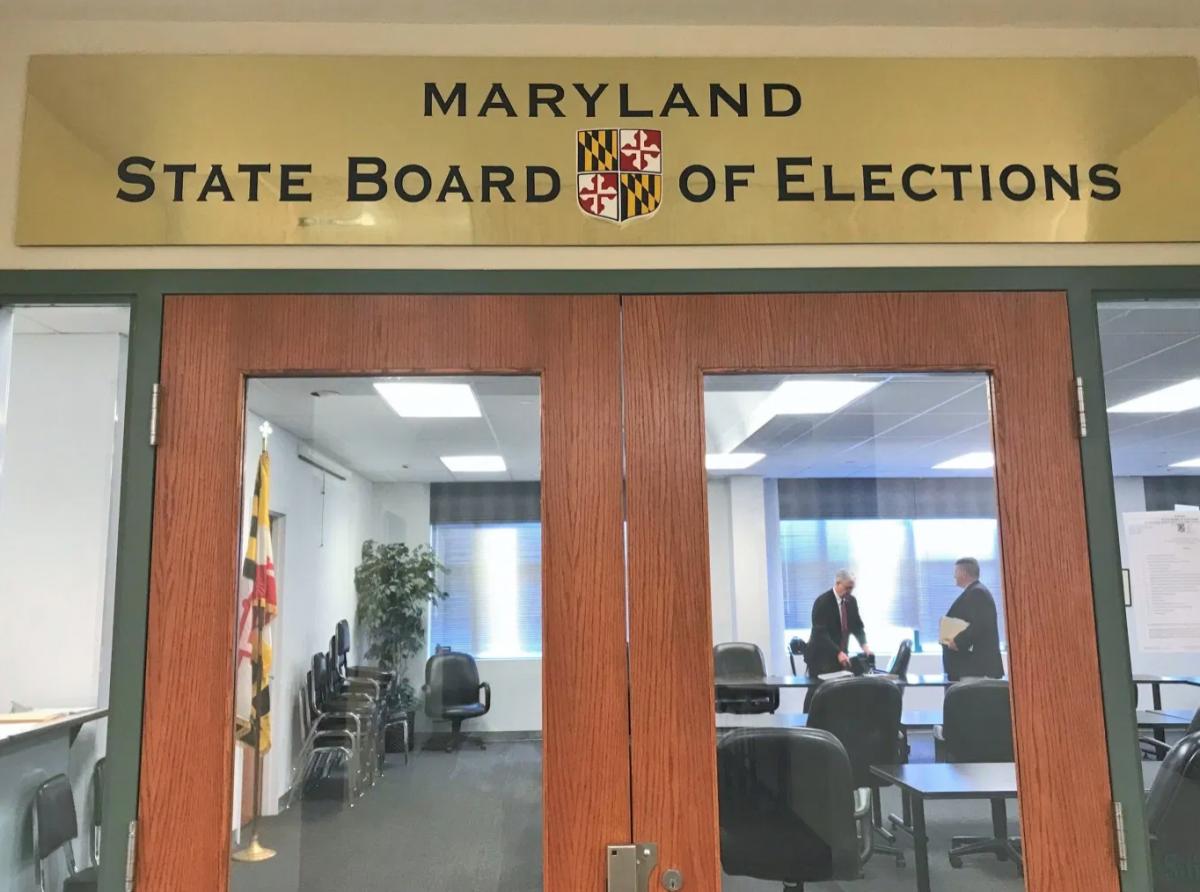Maryland’s State Board of Elections might take Gov. Lawrence J. Hogan Jr. (R) up on his offer to encourage state employees to fill election judge vacancies for local election boards across the state.
A shortage of election judges, fueled by safety concerns because of the continuing coronavirus pandemic, could foil Hogan’s plan to open every polling place for the Nov. 3 election.
David Garreis, president of the Maryland Association of Election Officials, warned that local election boards might have to consolidate polling places because they would not have enough election judges to operate them all.
“It’s becoming impossible to fill all of these vacancies,” Garreis told the State Board of Elections during a virtual meeting Thursday afternoon. “We’re not going to be able to make up for this election judge shortfall.”
In a July 8 letter, Hogan told members of Maryland’s elections board that the state would provide personal protective equipment and encourage state employees to fill in as election judges when needed. Now, as privately owned polling locations are being withdrawn for the Nov. 3 election and poll workers call it quits, officials are considering asking the governor for help.
“We need to let the governor know as soon as possible, so that his administration can get the word out and recruit state employees to be judges,” state elections board Vice Chairman Patrick J. Hogan said. “The inability to staff polling places, as we all know, will have dramatic impacts on the ability for such places to open at all.”
Garreis, who is also the deputy elections director for Anne Arundel County, said roughly 35% of poll worker positions for the upcoming election are vacant statewide. He has said it takes about 25,000 poll workers to run a general election in Maryland.
Poll worker positions need to be filled sooner rather than later, Garreis said. He said Anne Arundel County plans to begin training its election judges in mid-August, and that larger counties may begin training before then.
After the governor announced his intent, earlier this month, to hold a more traditional election in November, voting rights advocates, Democratic lawmakers and local election boards have called for him to reverse course and conduct a mail-in election.
On Wednesday, activists and lawmakers gathered outside of Hogan’s Annapolis residence and accused the governor of voter suppression.
Hogan seemed firm in his decision to expand in-person voting and send every registered Marylander an application for a mail-in ballot.
At a Wednesday evening press conference, the governor slammed the criticism and accusations of voter suppression as a “typical partisan argument.” He also criticized the State Board of Elections for what he described as a lack of preparation for the upcoming election.
Garreis pushed back on the governor’s claims of partisanship during the elections board’s Thursday meeting.
“The issues that we’re having are not a partisan issue,” Garreis said. “It’s a logistical issue stemming from a public health crisis.”
Officials also approved prepaid return envelopes for mail-in voting applications for the November election. Deputy Elections Administrator Nikki Charlson said the postage isn’t in the election board’s budget, but officials have said they’ll submit a budget amendment to cover that and other costs for the general election.
Prepaid postage for voters to return applications and mail-in ballots is expected to cost the state roughly $1.8 million, according to a recent letter to state officials from Maryland Elections Administrator Linda H. Lamone.
Elections board members also heard concerns from a Montgomery County resident about electronic ballots in the November elections. Lynn Garland said she has experience in elections security and noted that electronic ballots have to be printed by voters and transcribed by poll workers before they can be counted. That process is cumbersome, she said, and could delay results into December.
Republican Maryland elections board member Kelley A. Howells said she is worried about the prospect of already-limited poll workers painstakingly transcribing electronic ballots by hand.
“It really frightens me,” Howells said.
Many other board members seemed to share Howells’ concern and the board instructed staff to look at ways to encourage voters to use mail-in ballots rather than electronic ones.
The term “absentee ballot” is no longer used in Maryland. Charlson said a new state law changed the term to “mail-in ballot” and asked board members to refrain from using the “absentee” term.
By Bennett Leckrone



Paula Reeder says
It’s time for our Governor to get off his myopic, misguided soap-box and get with the program to enable and facilitate every eligible MD voter’s ability to cast their vote in November’s election without fear of contracting Covid19 and without having to endure endless lines and waiting times to do so. Speak up everybody and let him know that we demand that the State mail one step mail-in ballots to all eligible voters – PERIOD! Then, make sure you vote!